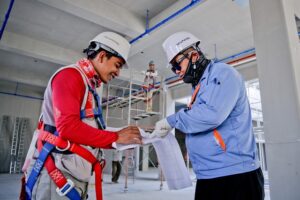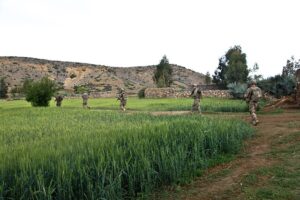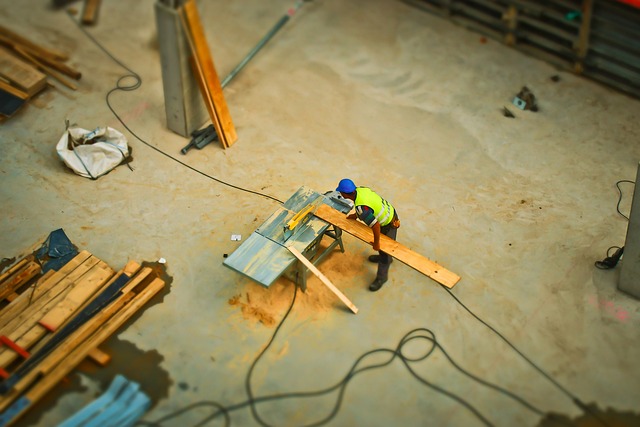
Flashlights for construction workers have revolutionized job site illumination by offering hands-free, adjustable lighting solutions that enhance precision and safety. These devices are designed with ergonomics in mind, allowing workers to secure them comfortably on helmets or hard hats, keeping both hands free for work tasks. They feature various brightness settings and modes, including red lights for preserving night vision, and are built to withstand harsh conditions, being impact-resistant and waterproof. The integration of LED technology ensures longevity and energy efficiency, while future advancements promise even more sophisticated features like augmented reality overlays and smart connectivity options to further improve the efficiency and safety of construction work environments. Flashlights For Construction Workers are an indispensable tool in modern construction, offering significant benefits over traditional lighting methods.
explore the transformative impact of hands-free lighting on precision tasks within the construction industry, particularly focusing on flashlights designed for workers. This article delves into the evolution of these tools, their indispensable role in ensuring task visibility and accuracy, key features to consider for high-quality hands-free models, and the mechanics that make them indispensable on site. Through case studies, we’ll examine real-world applications where such lighting has revolutionized work. Additionally, we’ll explore emerging innovations set to further enhance the utility of flashlights for construction workers, ensuring they remain at the forefront of safety and efficiency.
- The Evolution of Hands-Free Lighting in Construction: A Focus on Flashlights for Workers
- Understanding the Importance of Precision Tasks in Construction and the Role of Proper Illumination
- Flashlights for Construction Workers: Features to Look For in a High-Quality Hands-Free Model
- The Mechanics of Hands-Free Flashlights: How They Work and Their Benefits on Construction Sites
- Case Studies: Real-World Applications of Hands-Free Lighting in Precision Construction Tasks
- Selecting the Right Hands-Free Flashlight for Different Construction Environments and Jobs
- Innovations and Future Trends in Hands-Free Flashlights for Construction Workers
The Evolution of Hands-Free Lighting in Construction: A Focus on Flashlights for Workers
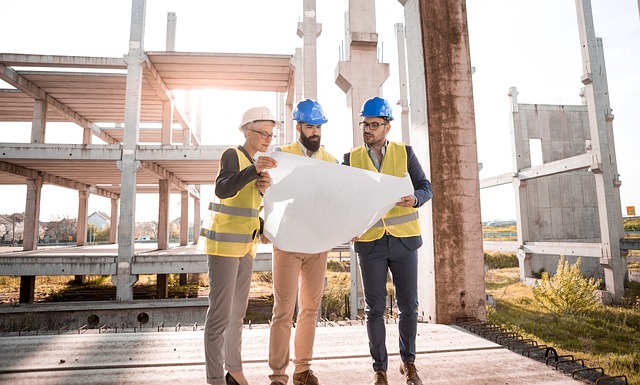
The integration of hands-free lighting solutions in construction has undergone a significant transformation, evolving from basic, stationary lights to sophisticated flashlight systems designed specifically for construction workers. This evolution reflects both technological advancements and the changing needs of the industry. Early iterations involved bulky, overhead fixtures that illuminated large areas but lacked the precision and portability required in various construction tasks. The advent of hands-free flashlights for construction workers marked a pivotal shift, offering a hands-free alternative that allowed workers to maintain visibility without compromising their manual operations. These early flashlights were robust and provided a consistent light source, which was a significant improvement over the previous fixed lighting options.
As technology progressed, so did the capabilities of hands-free flashlights for construction workers. Modern systems now incorporate high-intensity LEDs that offer brighter, more focused beams, essential for tasks such as reading blueprints, inspecting electrical components, or working in confined spaces. The design of these flashlights has also evolved to include adjustable beam patterns and rugged construction to withstand the rigorous conditions encountered on a job site. Additionally, some models are equipped with hands-free mechanisms like helmet mounts or magnetic bases that enable workers to position the light exactly where it’s needed, freeing up both hands for the task at hand. This advancement not only enhances worker safety and efficiency but also reduces the likelihood of tool drops or work stoppages due to lighting issues, making hands-free flashlights an indispensable tool in the modern construction worker’s arsenal.
Understanding the Importance of Precision Tasks in Construction and the Role of Proper Illumination
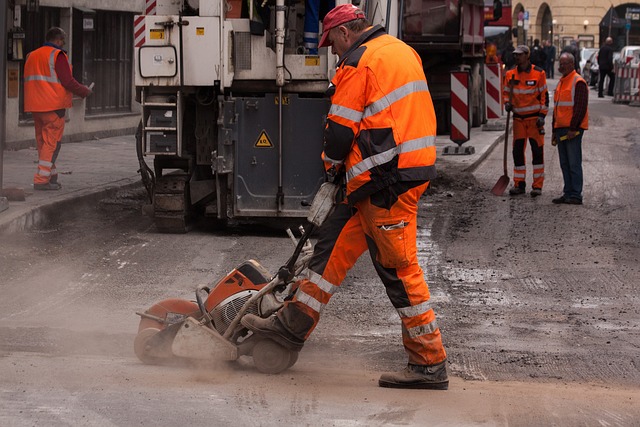
In the realm of construction, precision tasks are pivotal for ensuring structural integrity and safety. These intricate operations demand an unwavering focus and a clear visual field, which is where hands-free lighting solutions, such as flashlights for construction workers, become indispensable. Proper illumination is not just about brightness; it’s about the right type of light that enhances visibility in the complex interplay of shadows and glare often encountered on a construction site. Hands-free flashlights are designed to alleviate the burden of holding a device, allowing workers to navigate through detailed work with both hands free for their tools or materials. This freedom of movement not only improves efficiency but also significantly reduces the risk of accidents that could arise from manual handling of lighting equipment in tight spaces or on elevated platforms. The strategic placement of such lights ensures that every critical area is well-lit, facilitating meticulous work on electrical systems, masonry, carpentry, and more. As a result, flashlights for construction workers are a critical component in the arsenal of modern construction tools, enhancing precision and safety in the intricate dance of building and repairing structures.
Flashlights for Construction Workers: Features to Look For in a High-Quality Hands-Free Model

When selecting a high-quality hands-free flashlight tailored for construction workers, it’s crucial to consider features that enhance safety, convenience, and efficiency on the job. A robust hands-free flashlight should offer a durable design with a secure headband or helmet mount to ensure the light stays exactly where it’s needed, freeing up the worker’s hands for critical tasks. The beam quality is another significant factor; a high-intensity beam with a focused spotlight can illuminate dark areas effectively, which is essential when inspecting materials or working in confined spaces. Additionally, features such as adjustable brightness settings are beneficial for adapting to different lighting conditions, preventing glare, and conserving battery life when maximum luminosity isn’t necessary. Construction workers often operate in environments with varying temperatures, so a model with thermal regulation can prevent overheating and prolong its lifespan. Furthermore, impact-resistant materials and waterproof construction are vital for withstanding the demanding conditions typical on a construction site. LED technology is preferred due to its durability, long-lasting performance, and energy efficiency, making it an indispensable tool for any professional in the field. Lastly, considering the ergonomic design and weight distribution of the flashlight can significantly reduce user fatigue over long working hours, ensuring that construction workers have a reliable source of hands-free illumination without discomfort or strain.
The Mechanics of Hands-Free Flashlights: How They Work and Their Benefits on Construction Sites
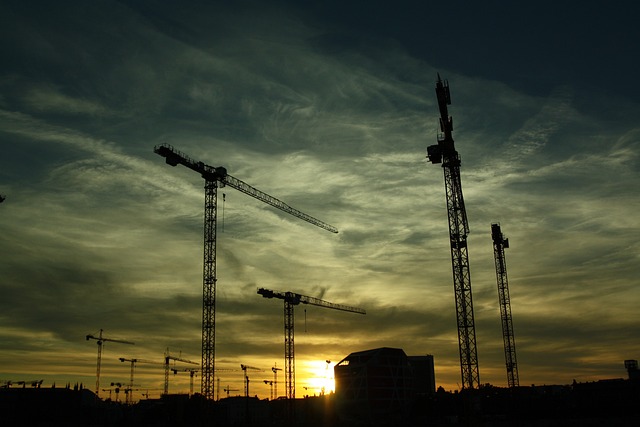
Flashlights designed for construction workers are a testament to innovation in hands-free lighting solutions, enhancing both safety and efficiency on worksites. These devices utilize adjustable headbands or helmets with integrated clips that secure the flashlight, allowing the light to point exactly where needed. The mechanics of these hands-free flashlights are straightforward yet effective; they typically feature a pivoting arm that holds the light source in position. This arm can be tilted and locked into place at various angles, ensuring optimal lighting for the task at hand. The benefit of this design is twofold: it frees up the worker’s hands to perform tasks without compromising on illumination, and it provides a dynamic lighting solution that adjusts as the worker moves. On construction sites, where precision and functionality are paramount, flashlights for construction workers offer unparalleled versatility. They are especially beneficial when workers need to navigate through narrow spaces or work in areas with limited access, providing targeted illumination without the need for additional support or equipment. The use of these hands-free flashlights not only enhances the worker’s ability to focus on their tasks but also reduces the risk of injury from dropping tools or fumbling in low light, making them an indispensable tool for construction professionals.
Case Studies: Real-World Applications of Hands-Free Lighting in Precision Construction Tasks
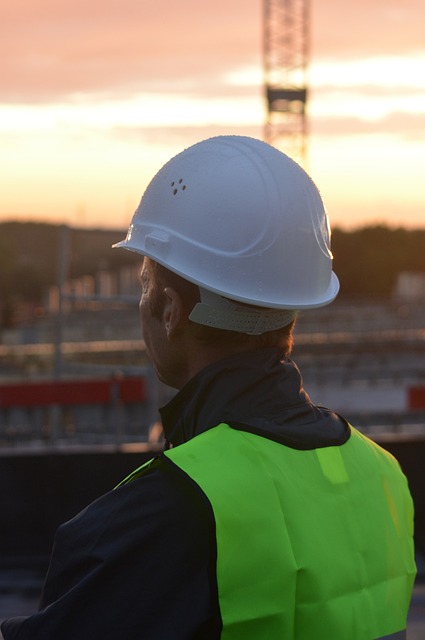
Hands-free lighting has become an indispensable tool in the field of precision construction tasks, where illumination is critical for both safety and accuracy. For instance, a case study from a major infrastructure project illustrated the effectiveness of hands-free flashlights for construction workers. In this scenario, the transition to headlamps allowed workers to navigate complex wiring installations without the encumbrance of holding a flashlight or positioning it at the right angle. This not only sped up the work process but also reduced the risk of electrical hazards caused by free-standing lights coming into contact with live wires. Similarly, masonry and tiling tasks that require meticulous alignment and leveling benefited from hands-free lighting, as it enabled workers to clearly see their work plane without shadow interference from traditional handheld flashlights. The adoption of such technology has been a game-changer, leading to enhanced precision and productivity in construction environments where visibility is key to quality outcomes. Another real-world application was observed in the field of restoration work, where preserving the integrity of historical materials is paramount. Hands-free lighting allowed conservators to apply minimal intrusion while illuminating delicate surfaces, facilitating meticulous repairs and maintenance with less risk of damaging the original material. These examples underscore the practical benefits of hands-free flashlights for construction workers, demonstrating their versatility and utility across various precision tasks within the industry.
Selecting the Right Hands-Free Flashlight for Different Construction Environments and Jobs
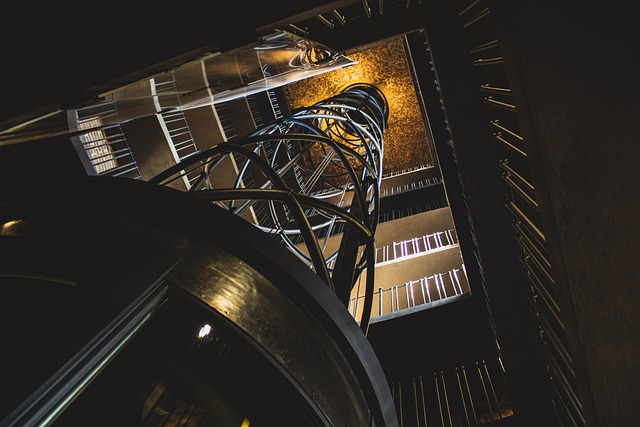
When construction workers need both hands free for tasks that require precision and focus, hands-free flashlights become an indispensable tool on the job site. Selecting the right hands-free flashlight is crucial for maintaining optimal visibility and safety in various construction environments. For instance, in confined spaces such as trenches or crawl spaces, a compact, adjustable headlamp with a focused beam can illuminate the immediate area without causing glare on surfaces. These headlamps often feature multiple light modes, including high, low, and red lighting options, which are particularly useful for preserving night vision during nighttime work.
For more demanding conditions, construction workers should consider flashlights with hands-free options that can withstand harsh environments. Durable designs with impact and water resistance are essential, especially when working outdoors or in areas prone to wet conditions. Additionally, the brightness level of the light is a key factor; high lumen outputs are necessary for well-lit work areas, while lower lumens save battery life for longer shifts. Features such as adjustable straps, comfortable headgear, and long-lasting batteries are also important considerations to ensure that the flashlight stays securely in place and provides consistent illumination throughout the worker’s shift. Flashlights For Construction Workers should be selected based on the specific needs of the task at hand, balancing brightness, durability, and battery life to enhance precision and safety during all phases of construction work.
Innovations and Future Trends in Hands-Free Flashlights for Construction Workers

The integration of hands-free lighting solutions has significantly enhanced the efficiency and safety of construction sites. Innovations in flashlights for construction workers are focusing on ergonomic designs that can be attached to helmets, hard hats, or belts, ensuring that light directs exactly where it’s needed without the need for freeing a hand from tools or materials. These advancements not only improve the worker’s ability to perform precise tasks but also reduce the risk of injury from manual handling of equipment in dark or low-light environments.
In the coming years, we can expect these hands-free flashlights to become even more sophisticated, with features such as augmented reality overlays for better task navigation, adjustable light intensity settings to match ambient lighting conditions, and smart connectivity that allows multiple lights to operate in a coordinated manner, illuminating large areas simultaneously. Additionally, the adoption of energy-efficient LED technology will continue to extend battery life and reduce operational costs on construction sites. The trend towards smarter, more versatile flashlights for construction workers is set to revolutionize the way tasks are carried out, making workplaces safer and more productive than ever before.
In conclusion, the integration of hands-free lighting solutions, particularly flashlights for construction workers, has revolutionized the way precision tasks are executed in the industry. The evolution from static lighting to wearable and hands-free options has not only enhanced safety but also significantly improved efficiency and productivity. Understanding the critical role that proper illumination plays in such tasks has led to the development of high-quality flashlights with features tailored to meet the diverse needs of construction workers. From the mechanics behind these devices to real-world applications showcased through case studies, it’s evident that selecting the right hands-free flashlight is crucial for different environments and job roles within the field. As we look forward, ongoing innovations and future trends promise to further elevate the capabilities of these indispensable tools, ensuring that construction workers have the best possible support for their demanding work. Flashlights for construction workers are transforming the landscape, making them an essential component in any modern construction professional’s toolkit.

